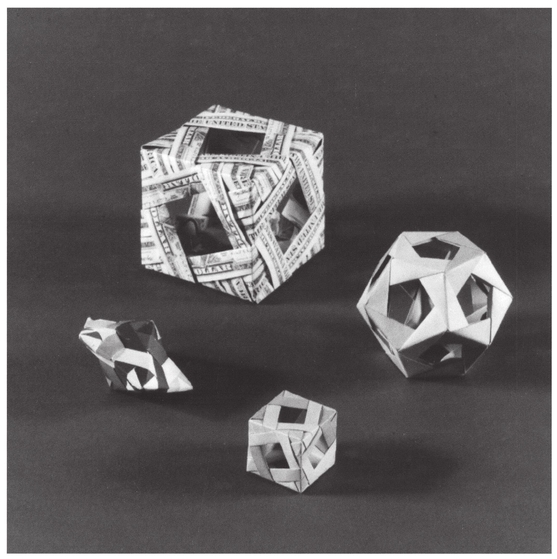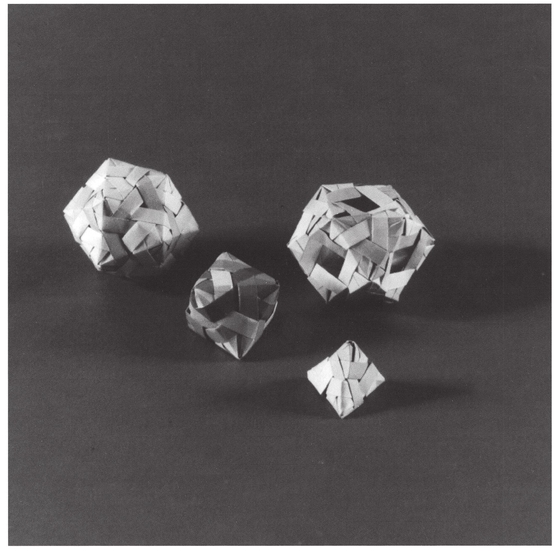The authors thank Joe Hamamoto for his model of the pentagonal dipyramid used in the picture on p. iv. We also thank Western Connecticut State University for the use of their computers and software to prepare the book. In particular, the Student Technology Training Center, Journalism Lab, Graphic Arts Lab, and Math and Computer Science Department provided their support. Special thanks go to M. C. Waldrep, Managing Editor at Dover Publications, for her thoughtful advice and apt assistance with preparation of the text and graphics files, and to Doug Planker and Maddie Wolke for generously sharing their software and design expertise. Photographs were taken by Bill Quinnell.
About the Authors
Lewis Simon was a postal worker and a math teacher. He died in November 1997. Bennett Arnstein is a retired mechanical engineer who worked in the aerospace industry. Rona Gurkewitz is a math and computer science professor at Western Connecticut State University.
Copyright
Copyright 1999 by Dover Publications, Inc.
All rights reserved.
Bibliographical Note
This Dover edition, first published in 1999, is a revised and enlarged republication of the work originally published in 1989 by Bennett Arnstein of Los Angeles, Calif. This edition includes some material previously published in 1995 by Dover Publications, Inc., in 3-D Geometric Origami: Modular Polyhedra , by Rona Gurkewitz and Bennett Arnstein.
Library of Congress Cataloging-in-Publication Data
Simon, Lewis.
Modular origami polyhedra / Lewis Simon, Bennett Arnstein, and Rona Gurkewitz.Rev. and enl. ed.
p. cm.
1. Origami. 2. PolyhedraModels. I. Arnstein, Bennett. II. Gurkewitz, Rona. III. Title.
TT870.G87 1999
736.982dc21
99-11934
CIP
International Standard Book Number
9780486137841
ISBN-10: 0-486-40476-5
Manufactured in the United States of America Dover Publications, Inc., 31 East 2nd Street, Mineola, N.Y. 11501
Dedication
This book is dedicated to the memories of Karan Hall and Lewis Simon.
At Dover Publications were committed to producing books in an earth-friendly manner and to helping our customers make greener choices.
Manufacturing books in the United States ensures compliance with strict environmental laws and eliminates the need for international freight shipping, a major contributor to global air pollution.
And printing on recycled paper helps minimize our consumption of trees, water and fossil fuels. The text of was printed on paper made with 30% post-consumer waste, and the cover was printed on paper made with 10% post-consumer waste. According to Environmental Defenses Paper Calculator, by using this innovative paper instead of conventional papers, we achieved the following environmental benefits:
Trees Saved: 7  Air Emissions Eliminated: 567 pounds Water Saved: 2,327 gallons Solid Waste Eliminated: 303 pounds
Air Emissions Eliminated: 567 pounds Water Saved: 2,327 gallons Solid Waste Eliminated: 303 pounds
For more information on our environmental practices, please visit us online at www.doverpublications.com/green
Clockwise :
12-Module Decoration Box from 2x1s adapted from dollar bills
30-Module Dodecahedron from 108-degree module from 4x3s
12-Module Decoration Box from 2x1s
15-Module Pentagonal Dipyramid from 60-degree half-square Plank modules
Part 1
Introduction
Clockwise from upper right:
24-Module Cuboctahedron from 90- to 60-degree half-square Plank modules
6-Module Tetrahedron from 60-degree half-square Plank modules
12-Module Octahedron from 60-degree half-square Plank modules
30-Module Icosahedron from 60-degree half-square Plank modules
As the title indicates, this book is a revised and enlarged edition of the original Modular Origami Polyhedra , by Lewis Simon and Bennett Arnstein, which was published by Bennett Arnstein in 1989. The models included here have been developed by the authors during the course of four decades. Lewis Simon was a pioneer in the field of modular origami in the 1960s. Since that time, many people have learned to enjoy the branch of origami called modular or unit origami. This type of origami consists of making models from several pieces of paper folded in the same way. Folding the modules can be simple. It is assembly that takes some practice if you are new to this type of folding. Even assembly may not be difficult until the last piece or two must be added to the model. With practice, the assembly process becomes very clear and dexterity develops. The results make the effort worthwhile.
This book contains diagrams for constructing modules that can be used to build polyhedral shapes. It is divided into sections for three main systems and a section for miscellaneous modules. As in the earlier book 3-D Geometric Origami: Modular Polyhedra (by Gurkewitz and Arnstein), we define a system of models as a collection of models that can be folded from different numbers of a given module or from modules that have related folding sequences. Another possibility is to vary the starting polygonal shape or the first few folds of the paper used for a module. A third possibility is to systematically vary an angle or angles on a module to produce a new module that makes a different polyhedron.
The Sonobe system, named after Mitsunobu Sonobe of Japan, is comprised of models made from different numbers of the basic module, creased in different ways, as well as a module with properties related to those of the basic module. The basic module can be viewed as a chain of four right triangles. The Sonobe polyhedral shapes made from the basic module are distinctive because their faces are all 45-45-90 right triangles or a combination of several such triangles. This book includes some foldings of the basic module designed by Lewis Simon, namely the 12-module cube and the 24-module cube. New in this book is the integration of the Sonobe shapes into the Decoration Box system. The generalization of the basic Sonobe module from a chain of four 45-45-90 right triangles to a chain of four equilateral triangles is different from the two similarly functioning modules in 3-D Geometric Origami. Other foldings of the basic module are possible and have been explored by Tomoko Fuse and Michael Naughton.
We think that Lewis Simon was one of the first to fold a stellated octahedron from Sonobe modules. We have included the stellated octahedron and the stellated icosahedron as models in this book. It should be noted that the stellation process has been generalized by Kasahara and others to building polyhedra with 3-, 4-, 5-, 6-, or 8-sided faces. To do this one builds a compound of pyramids for each polygon that is a face of the polyhedron. The number of pyramids in the compound will be based on the number of sides of the polygon. This book illustrates how to join three modules together to make a cube-corner pyramid. For 3-, 4-, 5-, and 6-sided faces of the polyhedron, the same number of pyramids are joined at a vertex to make a compound. For an 8-sided face, an octagonal compound is made up of four 3-sided compounds and five 4-sided compounds. There is a central 4-sided compound surrounded by alternating 3- and 4-sided compounds.

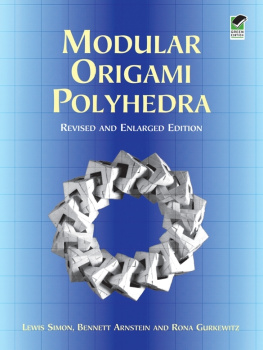
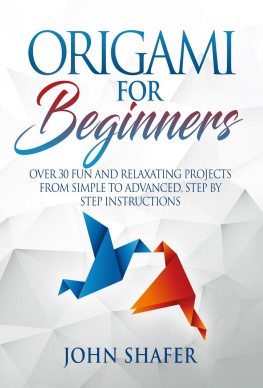
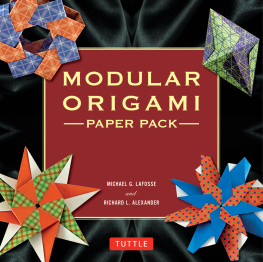


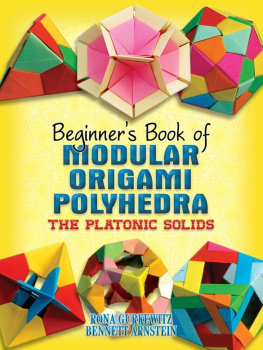
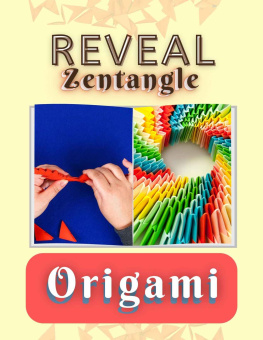

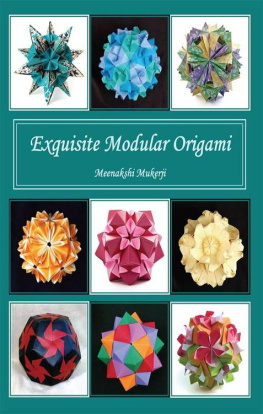
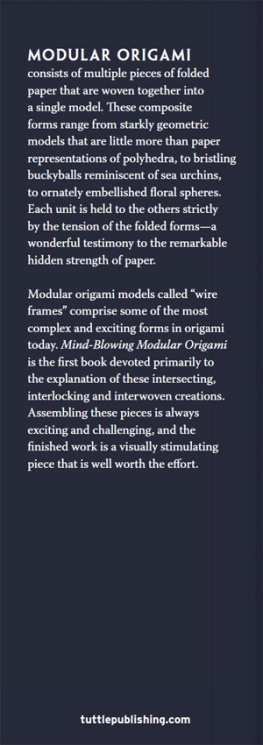
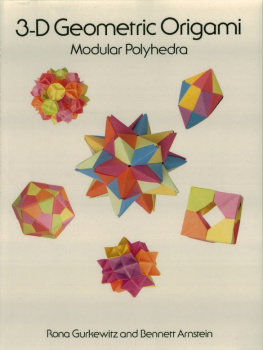
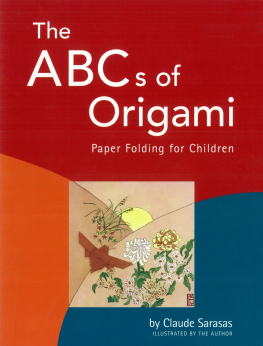

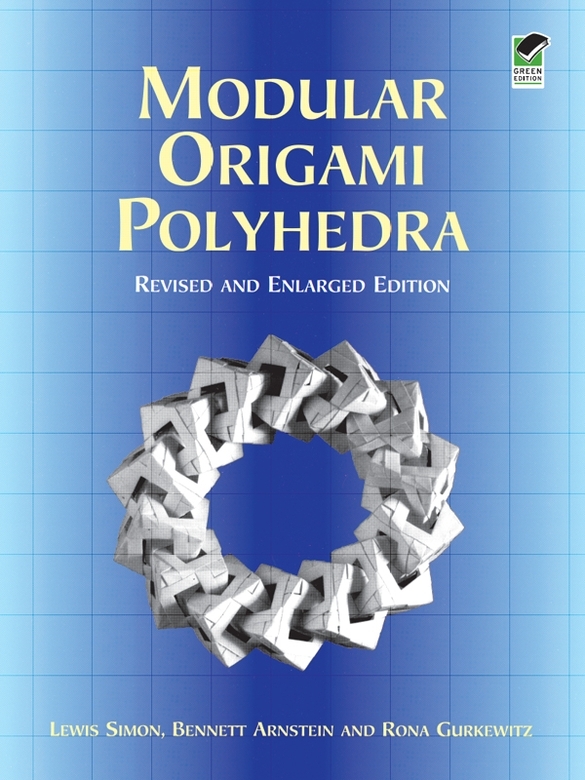

 Air Emissions Eliminated: 567 pounds Water Saved: 2,327 gallons Solid Waste Eliminated: 303 pounds
Air Emissions Eliminated: 567 pounds Water Saved: 2,327 gallons Solid Waste Eliminated: 303 pounds